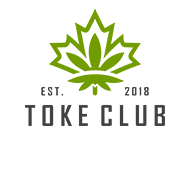Magic Mushrooms
Tips for Growing Your Own Magic Mushrooms at Home
Growing your own magic mushrooms (psilocybin mushrooms) can be an exciting and rewarding experience. While the process may seem daunting at first, with the right guidance, it’s possible to cultivate a successful harvest at home. Whether you’re looking to microdose for mental health benefits or seeking a more profound psychedelic experience, growing your own supply allows you to control quality and strain selection. Here are some essential tips for starting your mushroom cultivation journey.
1. Understand the Legal Landscape
Before diving into the technical aspects, it’s crucial to understand the legality of psilocybin mushrooms where you live. In some countries and regions, growing magic mushrooms is illegal, while others may have decriminalized or legalized them for personal use. Be sure to research your local laws to ensure you’re not unintentionally breaking any rules.
2. Choose the Right Strain
There are several strains of magic mushrooms, each with varying potency and effects. For beginners, the Psilocybe cubensis strain is highly recommended due to its ease of growth and accessibility. Within the cubensis species, strains like Golden Teacher and B+ are popular among home growers for their resilience and moderate potency.
Do your research to choose a strain that fits your desired experience and cultivation conditions.
3. Gather the Right Materials
To successfully grow magic mushrooms at home, you’ll need specific materials and equipment. Here’s a basic list of what you’ll need:
- Mushroom spores (most often sold in spore syringes or spore prints)
- Mason jars or grow bags (for colonization)
- Substrate (a mixture of brown rice flour, vermiculite, and water is a common option)
- Pressure cooker (for sterilizing the substrate)
- Still air box or laminar flow hood (for spore inoculation to prevent contamination)
- Plastic storage tubs or grow chambers (for fruiting)
- Perlite (to maintain humidity levels in the grow chamber)
You can find mushroom cultivation kits that include everything needed for growing or opt to gather individual components if you prefer a more DIY approach.
4. Maintain Sterile Conditions
One of the most critical factors for successful mushroom cultivation is maintaining a sterile environment. Magic mushrooms are highly sensitive to contaminants like mold and bacteria, which can ruin your grow before it even begins. Always sterilize your substrate using a pressure cooker and work in a clean, disinfected space.
Consider using a still air box when inoculating your jars with spores to minimize exposure to contaminants. Wash your hands thoroughly, wear gloves, and disinfect all surfaces before starting the process.
5. Prepare and Inoculate Your Substrate
Once your substrate is prepared (typically a blend of brown rice flour, vermiculite, and water), sterilize it in a pressure cooker for about 60-90 minutes. Allow the jars or bags to cool completely before inoculating them with mushroom spores.
Using a sterile syringe, inject the spores into the substrate through small holes in the jar lids or grow bags. Seal the jars or bags and place them in a warm, dark location (around 70-80°F or 21-27°C) to allow the mycelium to colonize the substrate.
6. Wait for Colonization
After inoculation, patience is key. Over the next 2-4 weeks, the mycelium will grow and colonize the substrate. You’ll see white, thread-like growth spreading throughout the substrate. Be on the lookout for signs of contamination, such as green, black, or yellow mold. If contamination occurs, it’s best to discard the affected jar to prevent it from spreading.
7. Prepare the Fruiting Chamber
Once the mycelium has fully colonized the substrate, it’s time to move it to the fruiting stage. For this, you’ll need a fruiting chamber, which can be a plastic tub with holes drilled in the sides for airflow. Line the bottom with soaked perlite to maintain high humidity levels (85-95%), which is crucial for mushroom growth.
You can place the colonized substrate (often called a “cake” at this stage) in the fruiting chamber and mist it with water a couple of times a day to maintain moisture levels. Fresh air exchange is also important, so open the chamber daily to let in fresh air.
8. Provide Proper Light
Magic mushrooms don’t need direct sunlight, but they do require a light source to trigger the fruiting process. Indirect light from a window or a low-intensity grow light works well. Aim for about 12 hours of light exposure per day. Ensure the light is not too strong, as intense heat can dry out the environment.
9. Monitor Humidity and Temperature
Humidity and temperature play crucial roles in successful mushroom cultivation. The ideal temperature for fruiting is between 65-75°F (18-24°C), and you should aim to maintain high humidity levels in the grow chamber. Regular misting and proper airflow will help create the perfect environment for mushrooms to thrive.
10. Harvesting Your Mushrooms
After a few weeks in the fruiting chamber, you’ll begin to see mushrooms sprouting from the substrate. The best time to harvest magic mushrooms is right before the veil under the cap breaks. Use clean, sterile hands or scissors to gently twist or cut the mushrooms at the base.
Once harvested, you can dry the mushrooms using a dehydrator or air drying method to preserve them for longer-term storage.
11. Practice Patience
Growing mushrooms requires patience and attention to detail. If you encounter contamination or delays, don’t get discouraged. Mushroom cultivation is a learning process, and even experienced growers face challenges. As you become more familiar with the growing conditions and the needs of your specific strain, you’ll improve with each grow cycle.
Conclusion
Growing magic mushrooms at home can be a fun and fulfilling way to explore the benefits of psilocybin. By following these tips, maintaining a sterile environment, and being patient throughout the process, you can successfully cultivate your own supply. Always remember to consume magic mushrooms responsibly and in a safe, controlled setting.

